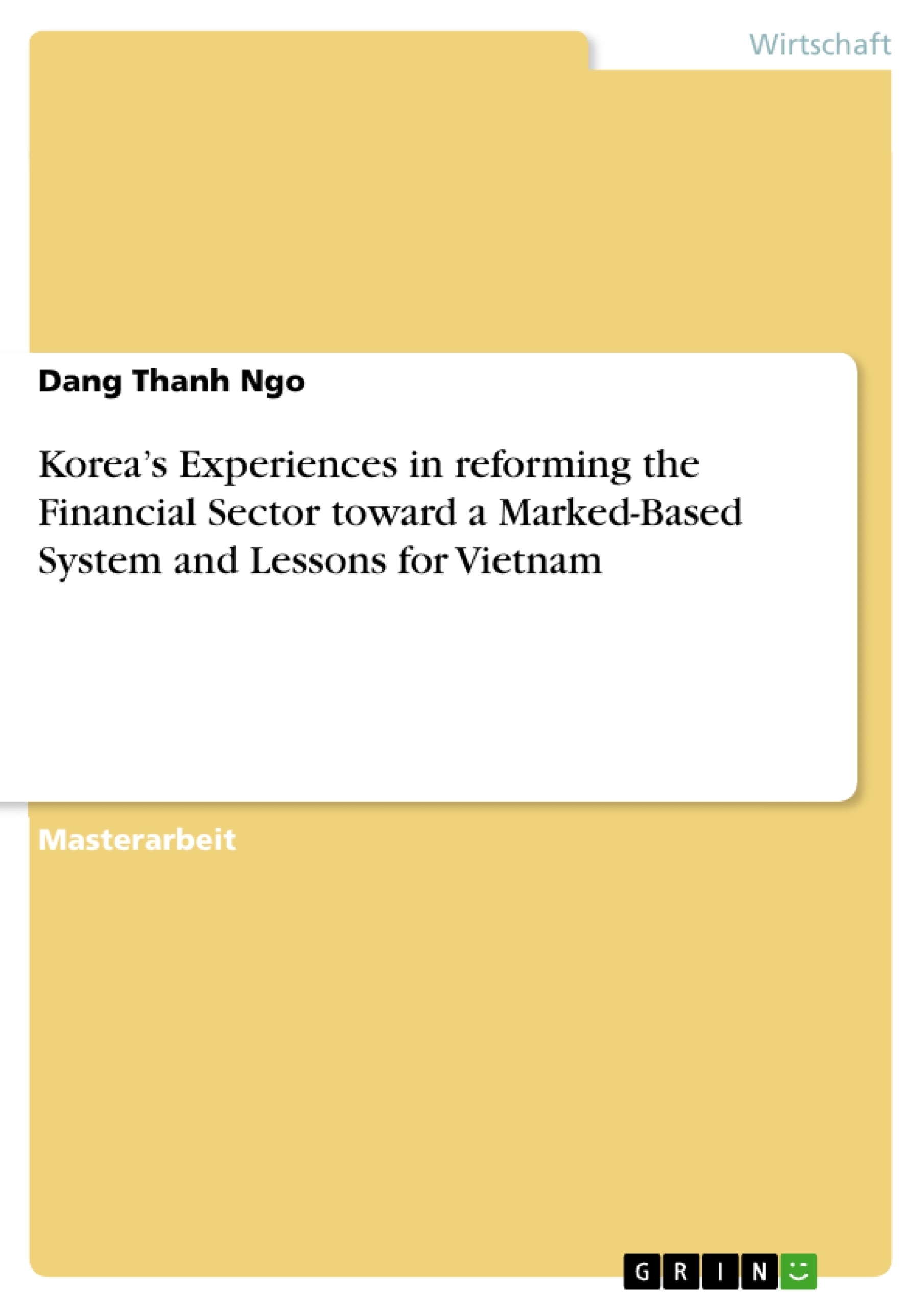Basically, the Korea’s financial sector has gone through three development period under two different types of financial systems. During these three periods, in theory, two financial systems were applied into the Korea’s financial sector: the relationship-based (or state-led) system (from 1960s to late 1980s) and the market-based system (after late 1980s till now). But in fact, due to the differences in applying the market style into Korea, we can see in the second system’s time, there was obviously two periods, the period of ‘gradualism’ and the period of ‘Big Bang’ with the turning point is in 1997. Therefore, it is better to define the history of Korea’s financial development into three periods. The first period started from early 1960s (after the military coup which brought Park Chung Hee to the position of President) to the late 1980s, in which Korea’s economy was under the relationship-based system; the second period lasted from late 1980s to 1997 when the financial crisis occurred due to wrong policies under ‘gradualism’ and bad effects of the first period; and the last period started from 1997 up to now when Korea take ‘Big Bang’ approach to cure its illness after the failure in 1997.
Researching the evolution of Korea’s financial system during the three periods as a whole process is important to collect experiences for under-developing country such as Vietnam to improve its financial system. Even though the conditions of Vietnam and Korea are different, but still, the logic behind each policy that the Korean government used in the past will be a big help to Vietnam as well as finding out the reasons of the failures that Korea did not avoid.
Inhaltsverzeichnis
- Abstract
- Dedication
- Acknowledgements
- Chapter 1: Introduction
- 1.1 Background
- 1.2 Objectives and Scope of the Study
- 1.3 Research Methodology
- 1.4 Organization of the Thesis
- Chapter 2: Literature Review
- 2.1 Financial Sector Reform: A General Overview
- 2.2 Financial Sector Reform in Korea
- 2.3 Financial Sector Reform in Vietnam
- Chapter 3: The Evolution of Korea's Financial System
- 3.1 The Relationship-Based System (1960s-Late 1980s)
- 3.1.1 The Role of the Government
- 3.1.2 The Role of Financial Institutions
- 3.1.3 The Role of Chaebols
- 3.1.4 The Impact of the Relationship-Based System
- 3.2 The Gradualism Approach (Late 1980s-1997)
- 3.2.1 The Liberalization Policy
- 3.2.2 The Impact of the Gradualism Approach
- 3.3 The Big Bang Approach (1997-Present)
- 3.3.1 The Financial Crisis of 1997
- 3.3.2 The Reform Measures
- 3.3.3 The Impact of the Big Bang Approach
- Chapter 4: Lessons for Vietnam
- 4.1 The Vietnamese Financial System
- 4.2 Lessons from Korea's Experiences
- 4.3 Recommendations for Vietnam
- Chapter 5: Conclusion
- Bibliography
- Appendix
Zielsetzung und Themenschwerpunkte
Diese Arbeit untersucht die Entwicklung des koreanischen Finanzsystems in den letzten Jahrzehnten und zieht Lehren für Vietnam. Sie analysiert die verschiedenen Phasen der Finanzreform in Korea, von der staatlich gelenkten Beziehungswirtschaft bis hin zum marktorientierten System. Die Arbeit beleuchtet die Herausforderungen und Erfolge der koreanischen Finanzreform und identifiziert wichtige Lehren für Vietnam, das sich ebenfalls auf dem Weg zu einem marktbasierten Finanzsystem befindet.
- Die Entwicklung des koreanischen Finanzsystems in drei Phasen: Beziehungswirtschaft, Gradualismus und Big Bang
- Die Rolle der Regierung, der Finanzinstitute und der Chaebols in der Entwicklung des koreanischen Finanzsystems
- Die Auswirkungen der Finanzreform auf die koreanische Wirtschaft
- Die Herausforderungen und Chancen für Vietnam bei der Reform seines Finanzsystems
- Lehren aus den Erfahrungen Koreas für Vietnam
Zusammenfassung der Kapitel
Kapitel 1 führt in das Thema der Finanzreform in Korea und Vietnam ein. Es beschreibt die Ziele und den Umfang der Studie sowie die angewandte Forschungsmethodik. Kapitel 2 bietet einen Überblick über die Literatur zu Finanzreformen im Allgemeinen und speziell in Korea und Vietnam. Kapitel 3 analysiert die Entwicklung des koreanischen Finanzsystems in drei Phasen: die Beziehungswirtschaft (1960er bis Ende der 1980er Jahre), der Gradualismus (Ende der 1980er bis 1997) und der Big Bang (1997 bis heute). Es untersucht die Rolle der Regierung, der Finanzinstitute und der Chaebols in jeder Phase und analysiert die Auswirkungen der jeweiligen Reformmaßnahmen auf die koreanische Wirtschaft. Kapitel 4 zieht Lehren aus den Erfahrungen Koreas für Vietnam und untersucht die Herausforderungen und Chancen für Vietnam bei der Reform seines Finanzsystems. Es bietet Empfehlungen für Vietnam, wie es die Erfahrungen Koreas nutzen kann, um seine eigene Finanzreform erfolgreich zu gestalten. Kapitel 5 fasst die wichtigsten Ergebnisse der Studie zusammen und bietet Schlussfolgerungen für die weitere Forschung.
Schlüsselwörter
Die Schlüsselwörter und Schwerpunktthemen des Textes umfassen die Finanzreform, das koreanische Finanzsystem, die Beziehungswirtschaft, den Gradualismus, den Big Bang, die Chaebols, die Finanzkrise von 1997, die vietnamesische Wirtschaft und die Lehren aus den Erfahrungen Koreas für Vietnam.
- Citar trabajo
- Dang Thanh Ngo (Autor), 2007, Korea’s Experiences in reforming the Financial Sector toward a Marked-Based System and Lessons for Vietnam, Múnich, GRIN Verlag, https://www.grin.com/document/187829



